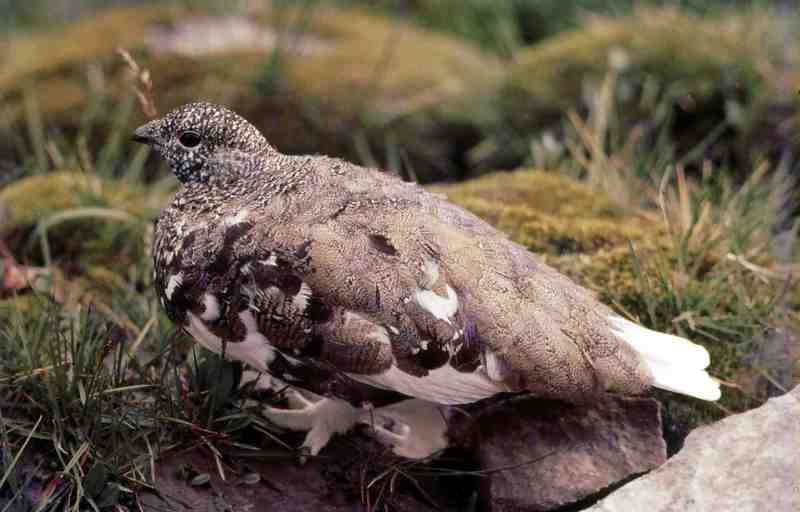|
| 질의: White-tailed ptarmigan | 결과: 1번째/16 | |
White-tailed Ptarmigan (Lagopus leucura) - Wiki
| 제목: | White-tailed Ptarmigan (Lagopus leucura) - Wiki
| |

| 해상도: 1792x1146
파일크기: 117464 Bytes
등록시간: 2007:10:26 11:22:45
|
White-tailed Ptarmigan
From Wikipedia, the free encyclopedia
[Photo] White-tailed Ptarmigan (Lagopus leucura), Rocky Mountains, Alberta. Date 1971. Author John Hill (http://commons.wikimedia.org/wiki/User:John_Hill) Copyright (C) 1971 John Hill
Permission is granted to copy, distribute and/or modify this document under the terms of the GNU Free Documentation License, Version 1.2 or any later version published by the Free Software Foundation; with no Invariant Sections, no Front-Cover Texts, and no Back-Cover Texts. A copy of the license is included in the section entitled "GNU Free Documentation License". |
The White-tailed Ptarmigan, Lagopus leucura, is the smallest bird in the grouse family. It is found in the mountains of western United States, Canada and Alaska.
Adults are 12 to 13 inches long, with males only slightly larger than females. The average weight is 12 to 15 ounces.
The White-tailed Ptarmigan is the smallest of the ptarmigans and is smaller than the Ruffed Grouse. In winter, this bird is pure white except for a black beak and eyes. In summer, it has a mottled and barred brown head, breast, and back with white wings, belly, and tail.
White-tailed Ptarmigan are so named because they are the only ptarmigan with no black on the tail. The tail is white during all seasons of the year. In fall, during the U.S. hunting season, both sexes are mostly pale cinnamon-rufous above with fine spotting and vermiculations to brownish black. A few breast feathers are usually white and the belly, tail, and wings are white. It makes soft, low hoots and low clucking noises.
The White-tailed Ptarmigan is an alpine species, a permanent resident of the high mountains above the timber line, during most of the year. It occupies open country and flies a great deal more than forest grouse, but still prefers running to flying. It ranges from Alaska and western Canada south to northern New Mexico.
Males return from their timberline wintering areas to establish territories on spruce-willow timberline breeding grounds in April. Females arrive in early May and pairs are formed. Four to eight buff, faintly spotted eggs are laid in a hollow on the ground lined with a small amount of grass, leaves, and feathers. Males remain with the females until the eggs are hatched after an incubation period of 23 days.
This species' winter food is primarily willow buds. Alpine areas lacking willow cannot support ptarmigan for long. In spring, the leaves and flowers of several forbs are eaten, but willow remains an important part of the diet. In summer, broods may also feed on insects and bulbils of knotweed. It eats grit to help digest its food.
The White-tailed Ptarmigan is the only bird in the alpine zone to remain there during winter, instead of migrating. It has feathers around its nostrils so the air that it breathes in is warm before it reaches its body. The white feathers also helps camouflage it.
http://en.wikipedia.org/wiki/White-tailed_Ptarmigan
| The text in this page is based on the copyrighted Wikipedia article shown in above URL. It is used under the GNU Free Documentation License. You may redistribute it, verbatim or modified, providing that you comply with the terms of the GFDL. |
|
 |
 |

|
White-tailed ptarmigan
1/16 |

|

|
^o^
동물그림창고 똑똑전화 누리집
^o^
|
|